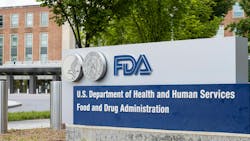Chemical Policy Crossroads: What Are the Make America Healthy Again Report’s Implications?
Key Takeaways: Make America Healthy Again Report
1. Chemical exposure concerns for children - The report calls for enhanced understanding of cumulative chemical effects on children's health, specifically highlighting concerns about PFAS, microplastics, fluoride, electromagnetic radiation, phthalates, bisphenols and pesticides.
2. Regulatory contradictions - The assessment advocates for stricter chemical controls while simultaneously arguing against key food industry regulations, creating tension with EPA's concurrent deregulation efforts under Administrator Lee Zeldin.
3. GRAS reform under Kennedy - HHS Secretary Robert F. Kennedy Jr. is targeting food safety, post-market monitoring, and Generally Recognized As Safe (GRAS) oversight reform, with a comprehensive strategy due in August 2025 and $500 million in requested funding.
In partial response to President Trump’s Feb. 13, 2025, Executive Order (EO) 14212, “Establishing The President’s Make America Healthy Again Commission,” the White House issued on May 22, 2025, “The MAHA Report” (with MAHA an acronym for Make America Healthy Again), titled “Make Our Children Healthy Again: Assessment.” If you have not read it, you should, as it raises, but does not answer, interesting questions for manufacturers of all stripes, especially those whose products involve chemicals.
The Assessment
Section One of the assessment, “The Shift to Ultra-Processed Foods,” includes the Commission’s thoughts on the U.S. agricultural system, food additives, food industry regulation and government food programs. Section Two of the assessment, “The Cumulative Load of Chemicals in our Environment,” includes the Commission’s take on chemical exposures and pathways and corporate influence and highlights some key concerns. The assessment’s core messages add yet another element of business uncertainty that chemical stakeholders would be wise to note.
Section Two calls upon the public and private sectors, but especially the National Institutes of Health (NIH), to enhance understanding of the cumulative effects of multiple exposures on children's health. It highlights concerns related to per- and poly-fluoroalkyl substances (PFAS), microplastics, fluoride, electromagnetic radiation (EMR), phthalates, bisphenols and crop protection tools, including pesticides, herbicides and insecticides.
The assessment’s call-out of fluoride is particularly notable, citing studies that suggest a correlation between fluoride exposure and reduced intelligence quotient (IQ) scores in children. Some of the cited studies have been criticized for methodological flaws, misinterpretations and incorrect understandings of key scientific fields. For instance, a systematic review and meta-analysis published by the American Medical Association in JAMA Pediatrics in January 2025 found an inverse association between high levels of fluoride exposure and children's IQ scores, but the authors acknowledged limitations in the data and cautioned against drawing definitive conclusions or — perhaps most importantly — applying the findings to the U.S. population. The authors note that none of the included studies were conducted in the United States, and none account for the impact of other factors, including socioeconomic status, that might be expected to influence the findings.
The assessment is hard to align with the mission of other federal agencies, particularly the U.S. Environmental Protection Agency (EPA). While the assessment advocates for stricter controls and greater regulatory oversight of certain chemicals, it argues against key regulations in the food industry and does not address the resource constraints faced by agencies like EPA, nor reflect the impacts of Trump’s “Unleashing Prosperity Through Deregulation” Presidential Action. Notably, on March 12, 2025, EPA Administrator Lee Zeldin announced 31 deregulatory actions, characterized as “the greatest and most consequential day of deregulation in U.S. history.” Interestingly, the assessment calls for “the current regulatory framework [to be] continually evaluated to ensure that chemicals and other exposures do not interact together to pose a threat to the health of our children.”
The assessment’s final recommendations, which it calls “Next Steps -- Supporting Gold-Standard Scientific Research and Developing a Comprehensive Strategy,” is distilled into a 10-point list including addressing the replication crisis, post-marketing surveillance, real-world data platforms, artificial intelligence (AI)-powered surveillance, Generally Recognized As Safe (GRAS) oversight reform, nutrition trials, large-scale lifestyle interventions, drug safety research, alternative test methods and precision toxicology.
These recommendations, and the assessment, coincide with President Trump’s May 23, 2025, EO 14303, Restoring Gold Standard Science. The EO telegraphs the administration’s allegiance to quality science but sidesteps the more controversial aspects of concerns with the quality and reliability of the MAHA assessment itself. Errors within the assessment have called into question the rigor of the assessment and, given the type of errors made, led to claims that it may have been, at least in part, authored by AI. For an assessment with a first “next step” of “improv[ing] trust and reliability in basic science,” it is a regrettable stumble. A new version of the assessment with corrections has been released. The MAHA Commission’s Make Our Children Healthy Again Strategy, in which it is expected to develop policy recommendations, is due in August 2025, with the White House requesting $500 million in funding from Congress to cover the cost of the MAHA initiative.
Implications
Make no mistake, U.S. Secretary of Health and Human Services Robert F. Kennedy Jr. is firmly at the helm and food safety, post-market monitoring and GRAS reform are all in his cross-hairs. Manufacturers supplying chemicals to these uses and applications, and stakeholders reliant upon GRAS determinations, are urged to monitor developments and be prepared for potentially significant change.
About the Author
Lynn L. Bergeson, Compliance Advisor columnist
LYNN L. BERGESON is managing director of Bergeson & Campbell, P.C., a Washington, D.C.-based law firm that concentrates on conventional, biobased, and nanoscale chemical industry issues. She served as chair of the American Bar Association Section of Environment, Energy, and Resources (2005-2006). The views expressed herein are solely those of the author. This column is not intended to provide, nor should be construed as, legal advice.

